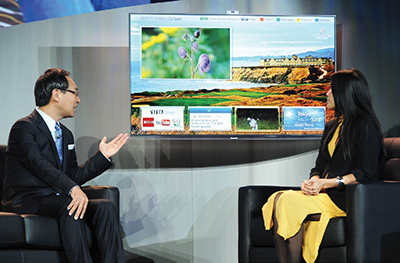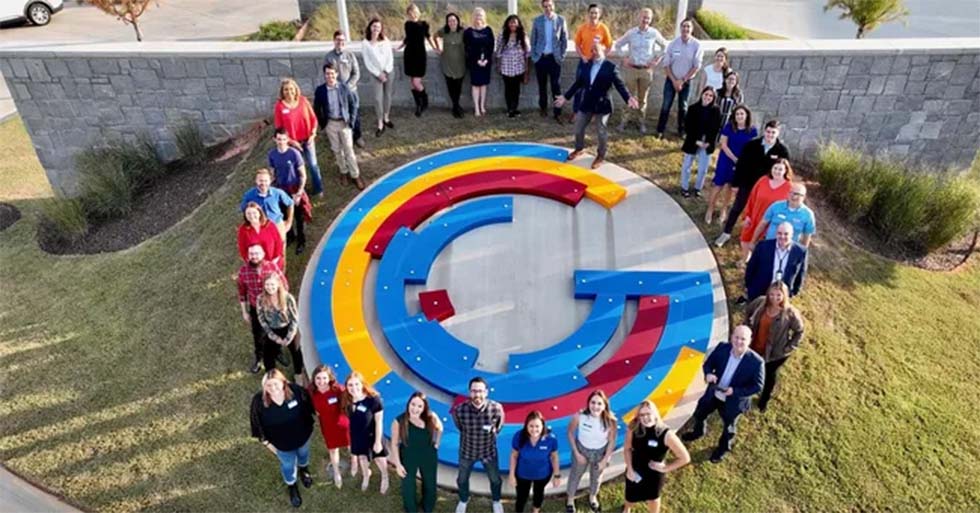‘Companion Devices’ Are Only Part of Immersive Video Environment

Gary Arlen During their presentations at the International CES last month, Cisco executives repeatedly used the term “companion devices” to describe the integration of tablets, smartphones or other second-screen tools for “shared content” during their presentations. Their verbiage reflected the absence of any second-screen products in Cisco’s inventory, not particularly surprising given the company’s focus on network management hardware, set-top boxes and system integration.
Yet the focus on two-screen operations triggers questions about whether viewers will ultimately prefer to multitask on separate screens, or if the immersive video future rests on the integration of linear and interactive onto a single screen—be it big-screen TV set, tablet or other device. The current overwhelming use of two-screens (by up to 85 percent of viewers) demonstrates the current viability of that approach to interactivity. Yet—as underscored at CES—many vendors expect that viewers may prefer seeing all their options on one screen.
“The proliferation of content confuses viewers even more,” said Balan Nair, executive vice president and chief technology officer of Liberty Global, during the Cisco presentation.
Panasonic, Samsung, Sony, LG and other TV-set makers continued to accelerate their TV apps, many of which offer over-the-top access to Internet video services such as Hulu, Netflix, Crackle, YouTube and similar OTT content. At the same time, their CES demonstrations underscored their interest in keeping eyes glued to the big flat panel. Behind that effort may be TV makers’ financial dreams to garner a revenue stream from video apps delivered via their smart TVs. For now however, they see value in keeping viewers focused on the flat panel that still dominates most viewers’ screen time.
GET SMART
Most visibly, Panasonic—which makes neither smartphone nor tablet (except for a newly introduced 20-inch commercial tablet)—offered several approaches to integrating TV and online content on its “SmarTViera” products. (Panasonic’s branding/logo uses “TV” as the literal bridge for its “Viera” smart TV sets). The company unveiled its alliance with TV shopping network HSN, demonstrating integrated technology that expands HSN’s “Shop by Remote” service. At a Panasonic presentation, HSN Chief Executive Officer Mindy Grossman characterized the service as an escalation of HSN’s “engagement and commerce vision” made possible by smart TV technology. Viewers can order from HSN’s linear feed and also order products on demand via HSN.com’s online catalog, which uses the company’s proprietary technology.

Panasonic President Kazuhiro Tsuga and journalist Lisa Ling demo Panasonic’s Smart Viera homescreen during a 2013 CES keynote. Panasonic said the HSN implementation was the first of many such content-driven video apps it plans to introduce during the coming year. And, not surprisingly, an HSN official told TV Technology that the company will launch this shopping app on other set-makers’ smart TV platforms, although he declined to identify the next companies.
The professional video industry's #1 source for news, trends and product and tech information. Sign up below.
Meanwhile, Samsung is pushing its “Smart Hub” User Interface, available on almost all future Samsung TV sets. Content is clustered into five app-like sections, which appear as tiles or panels when viewers turn on the Samsung set: “On TV” (showing six thumbnail images that suggest current programs based on viewing patterns), “Video-on- Demand” (including recommended Netflix and Hulu Plus titles), “My Content” (video, music and photos available from any device hooked into a home network), “Social” (feeds from Twitter, Facebook) and “Apps” (weather, stocks and other personal preferences).
The “Social” section enables viewers to plug into the social media chatter that often accompanies viewing of popular TV shows. The “Apps” option poses both competition and collaboration with traditional TV viewing. Since all Smart Hub options tie into Samsung’s increasing “recommendation” services, they also may affect the way viewers find and navigate (via voice or gesture control) to specific shows—whether online or from conventional linear sources.
“Smart Hub will change the way you discover content,” promised Tim Baxter, president of the Consumer Electronics Division at Samsung Electronics America Inc.
Similarly, LG—which also is expanding its voice and gesture-control options—demonstrated more TV apps, with a significant focus on its third-generation Google TV enhancements. Several LG TV models include opening screens that direct viewers to traditional TV channels, “premium” video content sources, such as Netflix, Flixster, Amazon, Crackle or OnLive videogames service, or to a “My Interest” category that offers weather and other websites.
CROSS-PLATFORM
These and other “one-screen” interactivity ventures unveiled at CES did not diminish the vitality of cross-platform—or “companion device,” as Cisco might call it—services. Samsung showed ways in which tablets and smartphones—not just Samsung products, but also Apple iPads and iPhones—can mirror content from or to the TV set. LG offered similar mirroring options, using “near-field communications”—touching a smartphone (in this case an LG Android-technology device) to a TV set peripheral, which paired the handset with the TV set.
Sony, as part of its expansion into the smartphone category, included a “SideView” feature, which enables viewers to mirror handset content onto a Bravia TV set by tapping on the remote control. The Sony Mobile Xperia Z smartphone uses Bravia Engine 2. It also allows smartphone content to be shared with Sony digital cameras and includes “Exmor RS” technology, which Sony calls “the world’s first image sensor with ‘High Dynamic Range’ video functionality” for clear pictures against strong backlight.
In addition to hardware makers’ efforts to prepare for one-screen and two-screen futures, third-party technology suppliers are eyeing their role in the integrated video business. For example, Rovi Corp. is calling its “Entertainment Unbound” platform “a natural evolution to TV Everywhere and multiscreen video initiatives.”
Matt Milne, Rovi’s executive vice president of products, sales and marketing, emphasized that its “concept demonstrations” focused on “a future of TV beyond the living room in which devices, formats, operating systems and even broadcast schedules no longer dictate the entertainment experience.”
Rovi claims its platform incorporates software enabling pay-TV service providers to introduce IP-based, multiscreen services and applications to their cable ecosystem via “broader device access, more content choices and an array of consumption models.”
As part of its move into this cross-platform landscape, Rovi also unveiled its plans to support the recently approved High-Efficiency Video Coding (HEVC)—also known as H.265—which doubles the efficiency of MPEG-4.
Amidst such diverse approaches to keeping viewers’ eyes on the screen, another remark resonates from the Cisco CES presentation, which was focused on introducing its “Videoscape Unity” platform (an update to the under-deployed two-year-old Videoscape technology).
Cisco called the new version a platform “for delivering and monetizing a new generation of compelling, differentiated video experiences.” Dozens of other CES exhibitors used almost identical terminology, generally peppered with promises of personalization, individualized recommendations and immersive video experiences.
For TV producers, delivery system providers (broadcast and cable companies) and for viewers, the verbiage and glittering demonstrations offered an attractive maze of options and opportunities, yet with lingering questions about affordability and user-friendliness/complexity.
Gary Arlen is president of Arlen Communications LLC, a media/telcom research firm. He can be reached at GaryArlen@columnist.com.
